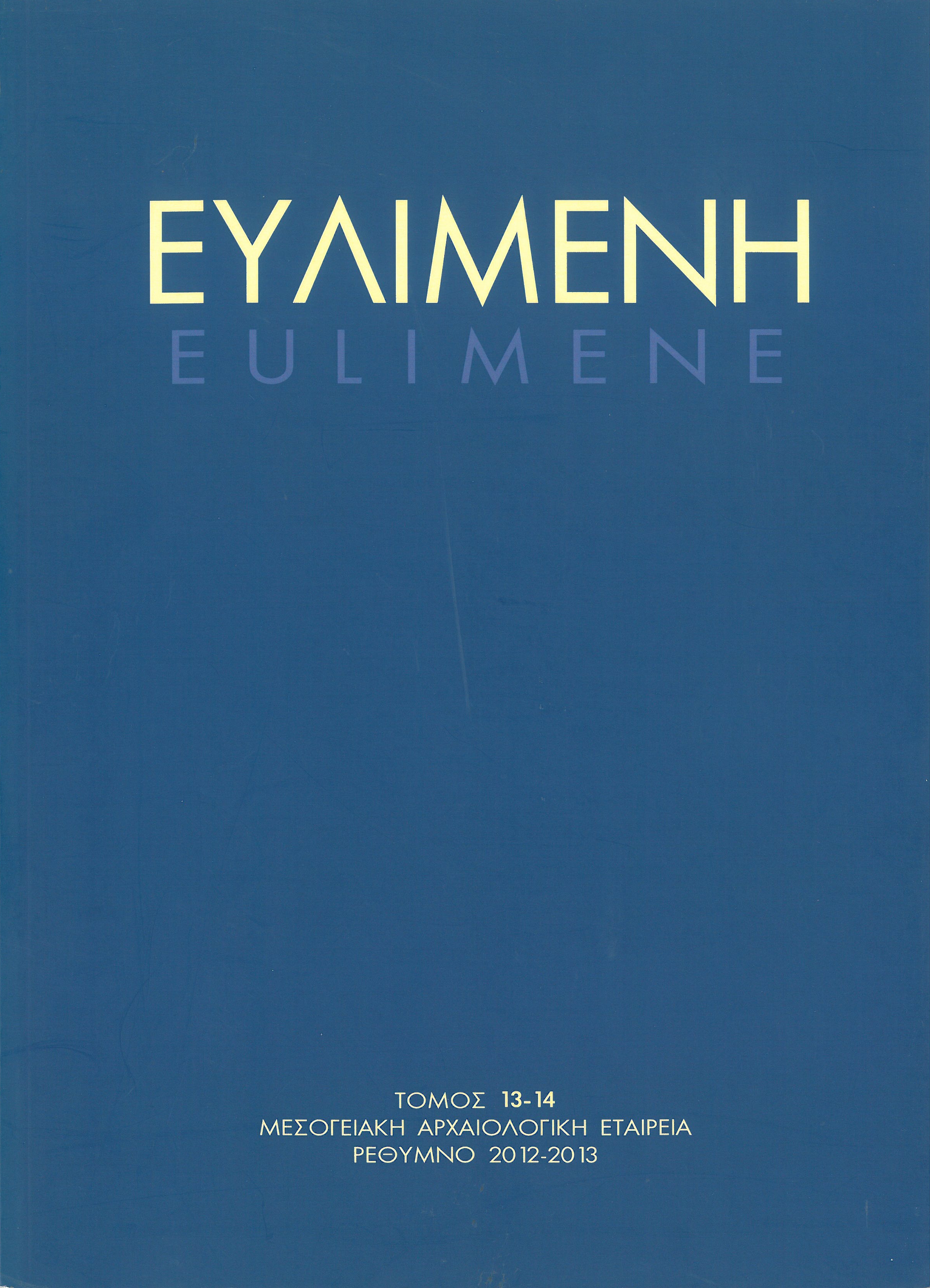Sculpture from Eleutherna

Abstract
In this paper all the sculptures that came to light during the excavation of the University of Crete in the eastern sector I of ancient Eleutherna between 1985-2003 are published, listed in chronological order. During the Hellenistic period, Eleutherna flourished and made its appearance on the historical and artistic scene. It flourished even in the years of Roman rule. Among the many self-standing, relief and architectural works of sculpture the following are distinguished due to their quality and iconographic rarity: the " sandal-slapping Aphrodite with Pan", 2nd century. BC; the relief pair "Hermes and Venus", 1st century BC, and the double-faced stele depicting Dionysus and Ariadne, a product of a neo-attic workshop of the 2nd century A.D. which seems to draw from a Praxitelian original.
Editorial Note
Volume 13-14 of Eulimene is devoted to the east sector (I) of the ancient Eleutherna, which was dug systematically by prof. Petros Themelis from 1985 until 2003. In three extensive articles, Petros Themelis, Yorgos Brokalakis and Martha W. Baldwin Bowsky, publish sculptures, tools and inscriptions respectively, unearthed during the excavations conducted during the above period and which date from the Hellenistic period (2nd century BC) to the early byzantine era (mid7th cent. AD).
Many of these artifacts are now exhibited in the newly completed Museum of Ancient Eleutherna, which opened its gates to the public in June 2016.
The publishing directors
Nikos Litinas – Manolis I. Stefanakis
##plugins.themes.ekt-hometheme.article.details##
- Fascicolo
- EULIMENE 13-14 (2012-1013)
- Sezione
- Articles
- Categorie
The copyright for articles in this journal is retained by the author(s), with first publication rights granted to the journal. Authors who submit articles to this journal confirm that third-party intellectual property rights are not violated in any way. By virtue of their appearance in this open access journal, articles can be used freely, with proper attribution, for educational and other non-commercial purposes. The Mediterranean Archaeological Society retains the right to publish papers that appear in EULIMENE in any form, including electronic, the journal may assume in the future. It also retains the right to deposit articles published in EULIMENE in its repository.





